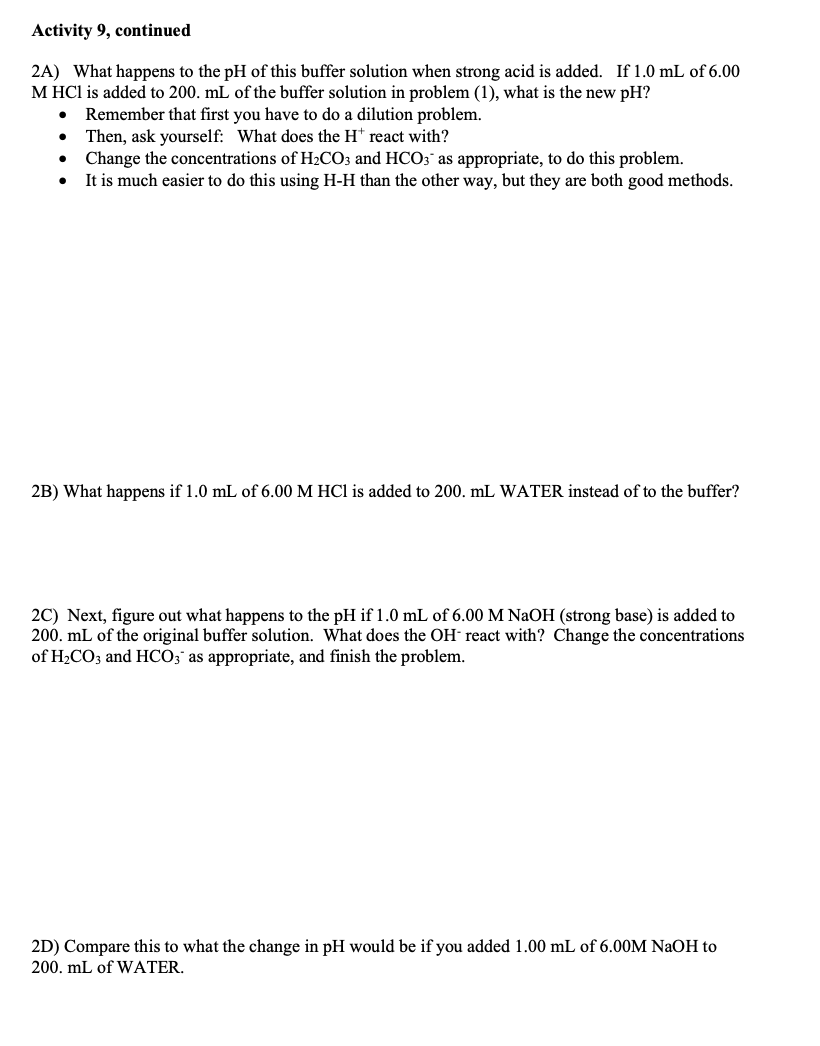(1) What is the pH of a solution that is 0.371 M carbonic acid (H2CO;) and 0.350 M sodium bicarbonate (NaHCO;)? Ka for carbonic acid is 4.3 x 107. Figure this out two ways: A) Starting with the acid dissociation equation and solving the ICE problem, figure out the pH. B) Use the Henderson-Hasselbalch Equation instead: pH = pK, + log| [HA], Remember that pK, is defined as –log(K.). You should get the same answer.
Ionic Equilibrium
Chemical equilibrium and ionic equilibrium are two major concepts in chemistry. Ionic equilibrium deals with the equilibrium involved in an ionization process while chemical equilibrium deals with the equilibrium during a chemical change. Ionic equilibrium is established between the ions and unionized species in a system. Understanding the concept of ionic equilibrium is very important to answer the questions related to certain chemical reactions in chemistry.
Arrhenius Acid
Arrhenius acid act as a good electrolyte as it dissociates to its respective ions in the aqueous solutions. Keeping it similar to the general acid properties, Arrhenius acid also neutralizes bases and turns litmus paper into red.
Bronsted Lowry Base In Inorganic Chemistry
Bronsted-Lowry base in inorganic chemistry is any chemical substance that can accept a proton from the other chemical substance it is reacting with.
![Activity 9
Buffer Solutions
This activity practices with two skills: (1) Determining the pH of a buffer solution, and (2)
figuring out changes in pH when strong acid or strong base is added to a volume of the buffer
solution. Finally, you will compare these pH changes to what would happen if the same
amount of strong acid or base is added to water.
(1) What is the pH of a solution that is 0.371 M carbonic acid (H2CO3) and 0.350 M sodium
bicarbonate (NaHCO;)? Ka for carbonic acid is 4.3 x 10-7. Figure this out two ways:
A) Starting with the acid dissociation equation and solving the ICE problem, figure out the pH.
[A*]
B) Use the Henderson-Hasselbalch Equation instead: pH = pK, + log
[HA]
Remember that pKa is defined as –log(Ka). You should get the same answer.
13](/v2/_next/image?url=https%3A%2F%2Fcontent.bartleby.com%2Fqna-images%2Fquestion%2Fd0ce4869-2d8f-499e-8e14-f12befc70f29%2F980fa849-e6b2-4c93-9b54-a671c26c120b%2Fj76qd1_processed.png&w=3840&q=75)

Trending now
This is a popular solution!
Step by step
Solved in 2 steps with 2 images









